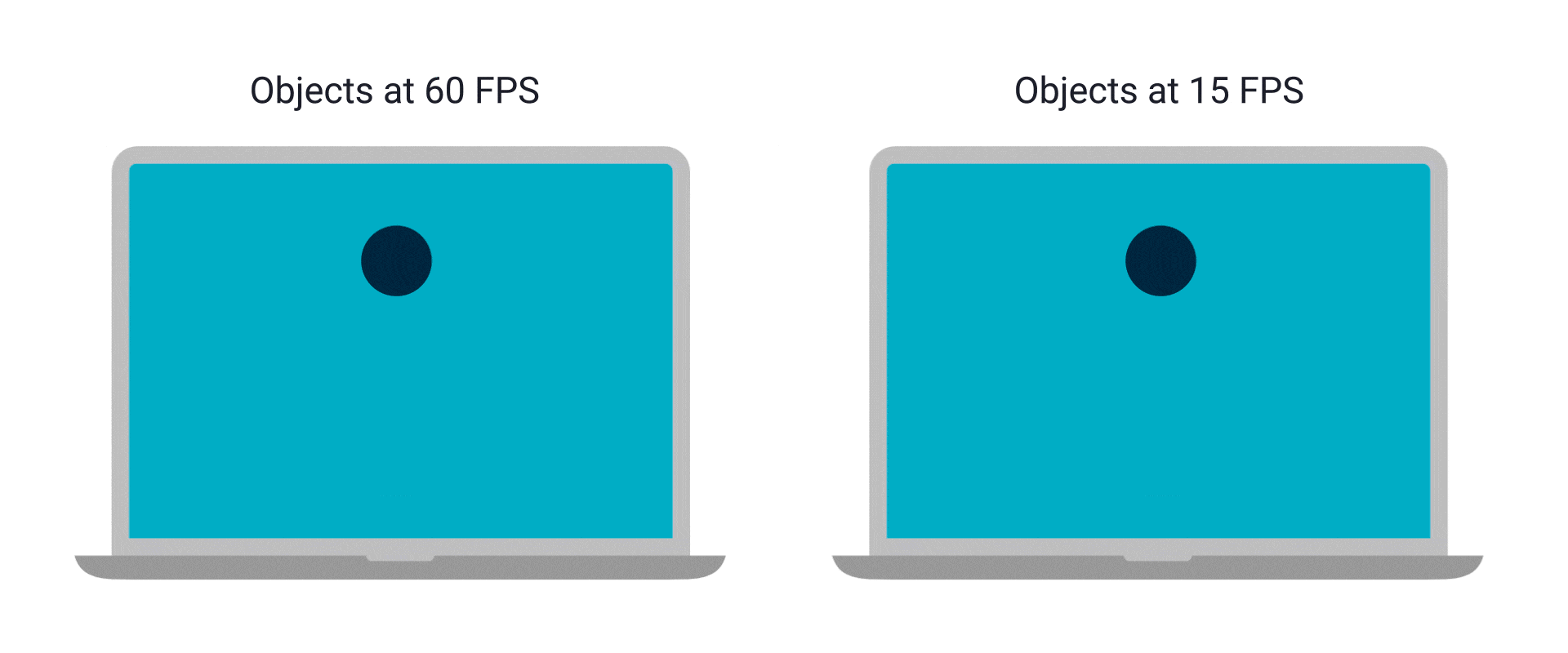Transcoding part : 2 End of Video Basic
 ritiksharmaaa
ritiksharmaaa
Understanding Bitrate and Its Relationship with Framerate
In the realm of video streaming, bitrate and framerate are two critical factors that significantly influence the quality and smoothness of video playback.
What is Bitrate?
Bitrate refers to the amount of data processed per unit of time in a video file, typically measured in kilobits per second (kbps) or megabits per second (Mbps). It essentially determines the amount of data transmitted for each second of video, directly affecting the video's quality and file size. A higher bitrate generally means better video quality, as more data can represent finer details and more complex scenes. However, this also leads to larger file sizes and higher bandwidth requirements.
What is Framerate?

Framerate, measured in frames per second (FPS), indicates how many individual frames (images) are displayed per second in a video. A higher framerate results in smoother motion, which is especially noticeable in fast-paced scenes, such as sports or action videos. Common framerates include 24 FPS (standard for movies), 30 FPS, and 60 FPS (often used in gaming and high-definition videos).
The Relationship Between Bitrate and Framerate
The relationship between bitrate and framerate is crucial for achieving a balance between video quality and data efficiency. Here's how they interact:
Higher Framerate Requires Higher Bitrate: As the framerate increases, more frames are being transmitted per second. To maintain the same level of visual quality for each frame, the bitrate must also increase. This ensures that each frame has enough data to retain its quality, preventing pixelation or blurring during playback.
Balancing Quality and Efficiency: While increasing the bitrate can enhance video quality, it also requires more storage and bandwidth. For instance, a video at 60 FPS will require approximately double the bitrate of a video at 30 FPS to maintain similar quality, due to the higher number of frames per second. Content creators must find a balance that provides an optimal viewing experience without excessive data consumption.
Compression and Encoding: Modern video codecs, such as H.264 and H.265, play a significant role in managing the relationship between bitrate and framerate. These codecs compress video data efficiently, allowing higher quality at lower bitrates. However, more complex scenes or higher framerates still demand higher bitrates to preserve visual fidelity.
Conclusion
Understanding the interplay between bitrate and framerate is essential for anyone involved in video production or streaming. Striking the right balance ensures that viewers enjoy high-quality videos without unnecessary buffering or data usage. As technology advances, the efficiency of encoding algorithms continues to improve, allowing for better quality at lower bitrates, benefiting both creators and viewers.
To understand the relationship between bitrate and framerate, let's use a mathematical approach to illustrate how they interact, especially in the context of video quality and smoothness.
Bitrate calculation can be understood similarly to how we calculate lengths using different units like centimeters (cm), meters (m), and kilometers (km). Each unit is a multiple of the basic unit, and you can convert between them using appropriate conversion factors. For bitrate, the basic unit is bits per second (bps), and larger units like kilobits per second (kbps) and megabits per second (Mbps) are used based on the magnitude of the data.
Here's how the conversion works:
Bitrate Units and Conversion
Bits per second (bps): The smallest unit, representing the number of bits transmitted or processed per second.
Kilobits per second (kbps):
- 1 kbps = 1,000 bps
Megabits per second (Mbps):
1 Mbps = 1,000,000 bps
1 Mbps = 1,000 kbps
Conversion Example
Let's calculate the bitrate in different units using an example:
Suppose you have a video file with the following properties:
File Size: 5 MB (megabytes)
Duration: 2 minutes (120 seconds)
First, convert the file size from megabytes to bits:
Convert MB to bits:
1 byte = 8 bits
1 MB = 1,024 KB (kilobytes)
1 KB = 1,024 bytes
1 MB = 1,024 × 1,024 bytes × 8 bits
So, the total number of bits in 5 MB is: [ 5 , \text{MB} = 5 \times 1,024 \times 1,024 \times 8 , \text{bits} ] [ 5 , \text{MB} = 41,943,040 , \text{bits} ]
Calculate the bitrate in bps: [ \text{Bitrate (bps)} = \frac{\text{Total Data (bits)}}{\text{Duration (seconds)}} ] [ \text{Bitrate} = \frac{41,943,040 , \text{bits}}{120 , \text{seconds}} ] [ \text{Bitrate} \approx 349,525.33 , \text{bps} ]
Convert bps to kbps: [ \text{Bitrate (kbps)} = \frac{349,525.33 , \text{bps}}{1,000} ] [ \text{Bitrate} \approx 349.53 , \text{kbps} ]
Convert bps to Mbps: [ \text{Bitrate (Mbps)} = \frac{349,525.33 , \text{bps}}{1,000,000} ] [ \text{Bitrate} \approx 0.3495 , \text{Mbps} ]
Summary
349,525.33 bps (bits per second)
349.53 kbps (kilobits per second)
0.3495 Mbps (megabits per second)
These conversions help in understanding and communicating bitrate in the most suitable units, just like choosing cm, m, or km based on the distance being measured.
Bitrate, Framerate, and Quality
Bitrate determines how much data is used per second of video, while framerate refers to the number of frames displayed per second. The amount of data used per frame can significantly impact video quality.
Example Calculation
Let's consider a scenario where:
Each frame of a video takes 300 bits of data to encode.
We want to determine how many frames per second (FPS) we can achieve with different bitrates.
Case 1: Bitrate = 3000 bits per second (bps)
Framerate Calculation: [ \text{Frames per Second (FPS)} = \frac{\text{Bitrate (bps)}}{\text{Bits per Frame}} ]
Plugging in the values: [ \text{FPS} = \frac{3000 \text{ bps}}{300 \text{ bits/frame}} = 10 \text{ FPS} ]
With a bitrate of 3000 bps, the video can display 10 frames per second. This relatively low framerate may result in a choppy or less smooth video experience.
Case 2: Bitrate = 6000 bits per second (bps)
Increasing the bitrate: [ \text{FPS} = \frac{6000 \text{ bps}}{300 \text{ bits/frame}} = 20 \text{ FPS} ]
Here, a higher bitrate of 6000 bps allows for 20 FPS, providing a smoother video experience compared to 10 FPS.
Case 3: Bitrate = 9000 bits per second (bps)
Further increasing the bitrate: [ \text{FPS} = \frac{9000 \text{ bps}}{300 \text{ bits/frame}} = 30 \text{ FPS} ]
At 9000 bps, we can achieve 30 FPS, which is considered standard for smooth video playback in many applications, such as television broadcasts and online streaming.
Analysis
From these examples, we can see that as the bitrate increases, the number of frames per second that can be displayed also increases, assuming a constant bits-per-frame value. This relationship highlights a key aspect of video encoding: higher bitrates enable higher framerates, resulting in smoother video.
However, there are trade-offs:
Storage and Bandwidth: Higher bitrates require more storage space and greater bandwidth for streaming or downloading. This can be a limiting factor in bandwidth-constrained environments.
Processing Power: Higher framerates and bitrates also demand more processing power for encoding and decoding, which can impact the performance on devices, especially those with limited resources.
Conclusion
By balancing bitrate and framerate, content creators can optimize the viewing experience, ensuring smooth playback without overloading storage and bandwidth. The choice depends on the desired quality, the capabilities of the playback devices, and the available resources for data transmission.
Understanding Codecs and Their Importance in Video Processing

What is a Codec?
A codec (short for compressor-decompressor or coder-decoder) is a technology used to compress and decompress digital media files, such as video and audio. Codecs are essential for reducing the size of large media files, making them easier to store, transmit, and play back without significant loss of quality. They work by encoding data into a more compact format for storage or transmission and decoding it back into its original or a similar format for playback.
Why Do We Need Codecs?
File Size Reduction
Storage Efficiency: Uncompressed video and audio files are enormous, requiring substantial storage space. Codecs compress these files, significantly reducing their size and making them more manageable.
Bandwidth Optimization: Smaller file sizes mean less bandwidth is needed for streaming or downloading, making it easier to deliver content over the internet without buffering or lag.
Improved Transmission Speed
- Compressed files can be transmitted faster over networks, essential for live streaming, online video conferencing, and delivering content to users quickly and efficiently.
Compatibility
- Codecs ensure compatibility with various devices and platforms. For example, a video encoded with a common codec like H.264 can be played on a wide range of devices, including smartphones, tablets, computers, and smart TVs.
Quality Preservation

- Modern codecs are designed to compress data efficiently while preserving the quality of the original media. Techniques like lossy and lossless compression allow for different levels of quality retention, depending on the specific needs of the application.
Variety of Use Cases
Different codecs are optimized for different purposes. For example:
H.264 and H.265 (HEVC): Popular for streaming and high-definition video content due to their efficient compression and quality.
VP9 and AV1: Open-source codecs often used in web-based applications like YouTube for delivering high-quality video with reduced data usage.
MP3 and AAC: Widely used for audio compression, balancing quality and file size.
Conclusion
Codecs play a crucial role in the digital media ecosystem. They enable the efficient storage, transmission, and playback of media files by compressing data without significantly compromising quality. The choice of codec can impact everything from the quality of the media to the speed of delivery and compatibility across devices. As technology evolves, new codecs continue to emerge, offering better compression and improved quality, meeting the growing demand for high-quality media content in a bandwidth-constrained world.
Subscribe to my newsletter
Read articles from ritiksharmaaa directly inside your inbox. Subscribe to the newsletter, and don't miss out.
Written by

ritiksharmaaa
ritiksharmaaa
Hy this is me Ritik sharma . i am software developer